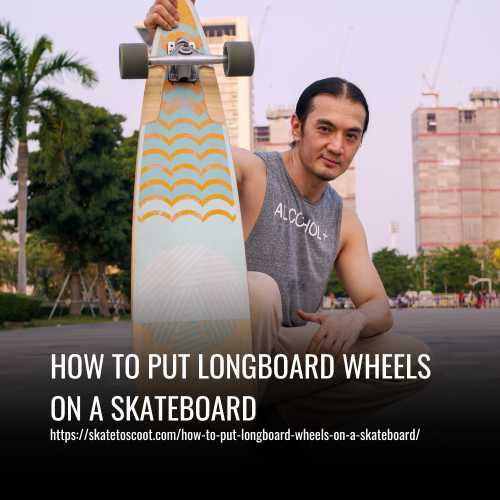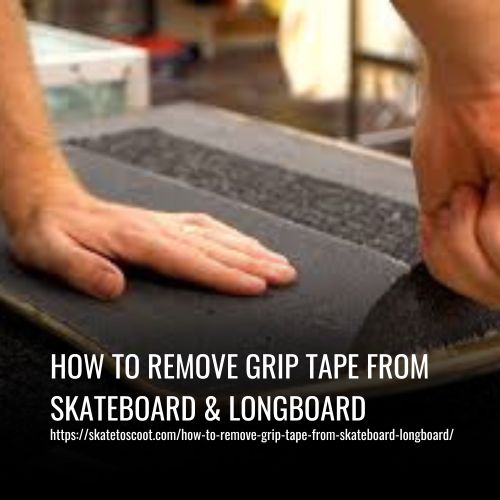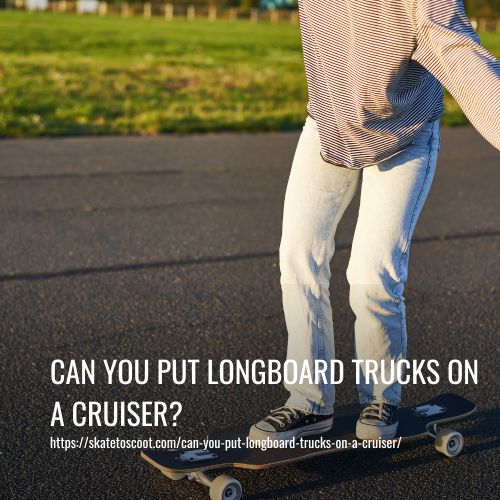As an Amazon Associate we earn from qualifying purchases.
Are you tired of the limitations of traditional skateboard wheels? Do you want to experience the smooth and effortless ride of longboard wheels on your skateboard? Well, you’re in luck! In this article, I’ll show you how to put longboard wheels on a skateboard, allowing you to enjoy a whole new level of cruising and carving.
Longboard wheels offer numerous benefits over their smaller counterparts. With their larger size and softer durometer, they provide better stability, smoother rides, and enhanced grip on different surfaces. By swapping out your skateboard wheels for longboard wheels, you can transform your riding experience and take your skills to new heights.
So, if you’re ready to upgrade your skateboard and explore the world of longboard wheels, read on as I guide you through the step-by-step process of installing them onto your board. Get ready to revolutionize your skateboarding sessions and elevate your ride to a whole new level of fun and excitement.

Skateboard Wheels Vs Longboard Wheels: What’s the Difference?
Skateboarding and longboarding are two popular forms of recreational activities that require different styles of riding and equipment. One key difference between the two is the type of wheels used. In this article, we will explore the differences between skateboard wheels and longboard wheels and whether you can put longboard wheels on your skateboard.
1. Wheel Diameter:
Skateboard wheels typically have a diameter ranging from 48mm to 60mm, while longboard wheels are larger, ranging from 63mm to 75mm. The larger diameter of longboard wheels provides a smoother ride, especially on rougher surfaces, and allows for increased stability at higher speeds.
2. Durometer:
A durometer is a measure of hardness. Skateboard wheels usually have a higher durometer, ranging from 95a to 101a, which provides a harder surface for tricks and power slides. On the other hand, longboard wheels have a softer durometer, typically ranging from 75a to 90a. Softer wheels offer better grip on different terrains and absorb vibrations for a smoother ride.
3. Texture and Performance:
Longboard wheels often have an even texture, designed to enhance grip and maintain better control during turns and slides. This texture helps riders navigate corners and curves more efficiently without sacrificing stability. Skateboard wheels, on the other hand, have a smoother surface, allowing for easier slides and tricks.
4. Compatibility:
Can you put longboard wheels on your skateboard? Yes, it is possible. Some skateboarders choose to modify their boards by swapping out their skateboard wheels for longboard wheels. This modification is sometimes referred to as a “chodeboard.”
However, it’s important to note that switching to larger and softer wheels can result in an increased risk of wheel bite, which is when the wheels come into contact with the deck during sharp turns or tricks. To prevent wheel bite, riders might need to add riser pads, adjust their trucks, or use smaller wheels.
Can You Put Longboard Wheels On A Skateboard?
Yes, you can put longboard wheels on a skateboard as long as the wheels are under 70mm in diameter and you have 1/2″ riser pads. Remember, while you can put longboard wheels on a skateboard, it’s essential to consider the diameter and use riser pads to avoid wheel bite. Enjoy your smoother ride and improved stability with longboard wheels on your skateboard.
How To Put Longboard Wheels On A Skateboard
If you’re looking for a smoother ride and better performance on rough surfaces, putting longboard wheels on your skateboard is a great option. Here’s how you can do it:
Before you get started, you’ll need the following Tools:
- Longboard wheels 60mm – 70mm in diameter
- 1/2″ Riser Pads
- 1 1/2″ Skateboard Hardware
- Skateboard Trucks
- Bearings
- A new or old skate deck
- A Skate Tool or a 9/16″, 1/2″, and 3/8″ socket with a Phillips screwdriver
1. Measure your wheel diameter:
Before you start, make sure that the longboard wheels you want to use are under 70mm in diameter. Larger wheels may cause wheel bite, so it’s essential to choose the right size.
2. Install riser pads:
To create more clearance for the larger wheels, you’ll need riser pads. These pads, typically made of rubber, act as spacers between the trucks and the deck. Use 1/2″ riser pads to provide sufficient clearance for your longboard wheels.
3. Remove existing wheels:
Using a skate tool, loosen the axle nuts on your skateboard trucks. Once they are loose, remove the existing skateboard wheels by pulling them off the truck axles.
4. Clean bearings:
While you have the wheels off, take the opportunity to clean your bearings. Remove the bearings from the skateboard wheels and use an appropriate cleaner to remove any dirt or debris. Dry the bearings thoroughly before reassembling.
5. Install longboard wheels:
Place a longboard wheel onto each truck axle, making sure they fit snugly. Ensure that the wheel bearings align with the axles and that they rotate smoothly.
6. Reassemble the trucks:
Put the washers back onto the axles, followed by the axle nuts. Use the skate tool to tighten the nuts until they are secure. Be careful not to overtighten, as this can damage the bearings.
7. Test the wheels:
Give your skateboard a gentle push to test the new longboard wheels. Take note of the clearance and make sure there is no wheel bite when turning.
A step-by-step guide To Put Longboard Wheels On A Skateboard
A Step-by-Step Guide to Put Longboard Wheels on a Skateboard
Step 1: Remove Both Trucks From Your Skateboard:
To begin, use a skate tool or a 3/8 socket to loosen the nuts holding the trucks to the deck. Place the socket over one of the nuts and use a Phillips screwdriver to rotate counterclockwise to remove the nut from the bolt. Repeat for all the bolts holding the trucks, then lift the trucks off the hardware and set them aside.
Step 2: Replace Existing Hardware With 1 1/2″ Hardware:
Since you’ll be adding riser pads, the existing 1″ hardware is too short. Replace all the bolts with 1 1/2″ hardware. Remove the old bolts and insert the new ones, ensuring they are securely tightened. This step provides enough length for the riser pads.
Step 3: Place 1/2″ Riser Pads On The Hardware Bolts:
Take the 1/2″ riser pads and slide them over the hardware bolts. Ensure that the smooth side of the riser pad is against the deck. The riser pads act as spacers between the trucks and the deck, providing extra clearance for the larger longboard wheels.
Step 4: Install Your Trucks Over The Riser Pads:
Reinstall the skateboard trucks, threading the baseplate through the bolts and adding the nuts to tighten them in place. Use a skate tool or a 3/8″ socket with a Phillips head to hold the bolt in place while tightening. Make sure the trucks are securely mounted to the riser pads.
Step 5: Place Bearings Inside Of Longboard Wheels:
Insert the bearings into the longboard wheels. Check that the bearings are fully seated inside the wheel and not sticking out. Properly seated bearings ensure smooth rotation and performance.
Step 6: Mount Your Wheels On The Trucks:
Place the longboard wheels onto the truck axles and tighten them with the axle nuts. Ensure that there is a speed washer on either side of the wheel on the axle to protect the bearings. The wheels should have a bit of wiggle room to spin freely and smoothly. If using bearing spacers, tighten the wheels until they are snug, but don’t overtighten.
By following these steps, you can successfully put longboard wheels on your skateboard, improving the ride quality and performance on rough surfaces.
Testing Out The Setup
Once you have put longboard wheels on your skateboard, it’s time to test out your new setup. This will allow you to assess the performance and ride quality of your board. Here are some steps and tips to follow when testing out your setup:
1. Take it for a Spin:
Get on your skateboard and go for a ride. Start by riding on a smooth surface to get a feel for how the longboard wheels handle. Consider trying both slow and fast speeds to gauge their performance.
2. Pay Attention to Ride Quality:
Notice how the longboard wheels affect the ride quality. Are you experiencing a smoother ride compared to your previous skateboard wheels? Is the ride more comfortable, especially when riding over rough surfaces? Assessing the ride quality will help you determine if the switch to longboard wheels was worth it.
3. Test on Different Terrains:
Take your skateboard to different terrains to see how the longboard wheels perform. Try riding on rougher surfaces, such as concrete with cracks or rough asphalt, to see if the wheels provide better stability and reduce wheel bite. Additionally, try riding on smoother surfaces to experience the speed and responsiveness of the longboard wheels.
4. Assess Control and Stability:
Pay attention to how the longboard wheels affect your control and stability while riding. Notice if the higher center of gravity with the larger wheels affects your ability to perform basic tricks or maneuvers. If you feel like you have too much leverage over your trucks and the board feels too loose, consider tightening your trucks and possibly changing your bushings to a harder durometer.
5. Consider Additional Adjustments:
If you’re not fully satisfied with the performance of your longboard wheel setup, there are additional adjustments you can make. Experiment with different bushing combinations to fine-tune the control and stability of your board. You can also seek recommendations from your local skate shop or customer service team for further assistance.
Can You Do Tricks On A Skateboard With Longboard Wheels?
While it is possible to do tricks on a skateboard with longboard wheels, it is important to understand the limitations of this setup. Here are some factors to consider when attempting tricks with longboard wheels:
1. Size and Weight Limitations:
Longboard wheels are much larger and heavier compared to traditional skateboard wheels. This can make it more challenging to perform certain tricks that require quick and precise movements. The size and weight of the wheels may limit your ability to pop the board and execute tricks like kickflips or heelflips.
2. Wheel Bite:
One significant issue with using longboard wheels on a skateboard is the increased risk of wheel bite. Wheel bite occurs when the wheels make contact with the skateboard deck, leading to a sudden stop or disruption in your trick. This is more likely to happen with longboard wheels due to their larger size and the potential for the wheels to touch the deck during certain maneuvers.
3. Difficulty in Sliding and Pivoting:
Longboard wheels are usually made of softer materials, such as polyurethane, which provide a smooth and comfortable ride. However, this softness can make it more challenging to slide and pivot during tricks. The wheels may grip the ground too much, making it difficult to execute slides or sharp turns.
4. Limited Trick Options:
Due to the size, weight, and softness of longboard wheels, the range of tricks that can be performed effectively is limited. Basic tricks like ollies, shuvits, and simple board slides on flat bars are more feasible with this setup. However, you should avoid attempting advanced tricks down drops or stairs as the larger wheels increase the risk of launching off the board upon landing.
The Pros And Cons Of Putting Longboard Wheels On A Skateboard
The Pros And Cons Of Putting Longboard Wheels On A Skateboard:
Pros:
1. Longboard Wheels Are Great For Cruising:
- Larger wheels with softer durometers provide a smooth and comfortable ride.
- Roll faster and hold speed better, making them ideal for cruising around town.
- Perfect for commuting to work or school, or even as a board for getting to the skatepark.
2. Rough Concrete Will Feel Like Butter:
- Soft durometers of longboard wheels reduce vibration from uneven cement or bumps in the road.
- Feel smooth even on the roughest concrete surfaces.
- Great for riding on rough surfaces with cracks or bumps.
3. The Larger Wheels Will Hold Speed Well:
- Once the larger wheels get going, they go fast.
- Can hold speed for longer without needing to push.
- Ideal for riders who want to maintain speed for cruising or downhill racing.
Cons:
1. Riser Pads May Throw Off Your Balance:
- Using riser pads with longboard wheels can make you feel wobbly and off-balance.
- The increased height from the riser pads can take some time to get used to.
- May affect your stability and control, especially when performing tricks.
2. Wheel Bite Is Going To Happen:
- Even with riser pads, longboard wheels increase the risk of wheel bite.
- Leaning hard into turns may cause the deck and wheel to touch, resulting in a sudden stop or disruption in your ride.
- Can lead to accidents and falls, especially during fast turns or maneuvers.
3. Tricks Will Be Much Harder To Do:
- Longboard wheels are larger, heavier, and softer, making most tricks feel more challenging.
- Popping an ollie or performing rotational tricks requires more force compared to a traditional skateboard setup.
- Soft longboard wheels have more grip and friction with the ground, making it harder to slide and pivot during tricks.
What to Avoid?
What to Avoid When Putting Longboard Wheels on a Skateboard:
1. Avoid Wheel Bite Mishaps:
- Despite using riser pads, there is still the risk of wheel bite with longboard wheels on a skateboard.
- Wheel bite occurs when the deck and wheel make contact, causing a sudden stop or disruption in your ride.
- To avoid accidents and falls, especially during fast turns or maneuvers, be cautious of leaning too hard into turns with longboard wheels.
2. Be Prepared for Trick Difficulty:
- Longboard wheels, being larger, heavier, and softer than regular skateboard wheels, can make tricks more challenging.
- The increased force required for popping an ollie or performing rotational tricks may take some getting used to.
- Keep in mind that longboard wheels are designed more for cruising and speed rather than intricate trick execution.
3. Consider the Impact on Balance and Stability:
- Using riser pads with longboard wheels can affect your balance and stability.
- The increased height from the riser pads may make you feel wobbly and off-balance at first.
- Take some time to adjust to the altered deck height and experiment with different setups to find what works best for you.
4. Customization Limitations:
- When installing longboard wheels on a skateboard, it’s important to remember that they are inherently different from traditional skateboard wheels.
- While riser pads and wheel adjustments can help mitigate some issues, customization has its limitations.
- Recognize that your skateboard will not fully transform into a longboard, and certain aspects, such as wheel size and truck setup, will still be based on the original skateboard design.
5. Mind the Size of the Wheels:
- To minimize potential problems, consider using 55mm wheels on your skateboard with longboard wheels.
- This size is recommended as it strikes a balance between the advantages of longboard wheels and the limitations of a skateboard deck.
- Remember that the size of the wheels affects the overall ride quality, maneuverability, and compatibility with your skateboard setup.
6. Avoid Overlooking File Adjustments:
- Depending on your skateboard deck, you may need to file away the cutout to accommodate the larger longboard wheels.
- Filing the cutout can make the wheel wells more pronounced and prevent wheel bite issues.
- Consult with experts or professionals to get their opinions on the best approach for your specific skateboard deck.
FAQs
Yes, it is possible to use longboard wheels on a skateboard. However, there are certain factors to consider to ensure compatibility and a smooth riding experience.
Wheel bite, the contact between the deck and wheel causing a sudden stop, can still occur even with riser pads. Be cautious of leaning too hard into turns to avoid accidents.
Yes, tricks may become more challenging with longboard wheels. Their larger size, weight, and softer durometer require greater force for popping an ollie or performing rotational tricks.
Using riser pads with longboard wheels can impact your balance and stability. The increased deck height may feel wobbly at first, so it’s important to adjust and find the right setup for you.
It is recommended to use 55mm wheels on a skateboard with longboard wheels. This size balances the advantages of longboard wheels with the limitations of a skateboard deck.
Depending on your skateboard deck, you may need to file away the cutout to accommodate the larger longboard wheels. This prevents wheel bite and ensures a smoother ride.
Conclusion:
Learning how to put longboard wheels on a skateboard opens up a whole new world of possibilities for riders. Whether you’re seeking a smoother ride, improved stability, or the ability to cruise long distances, this simple modification can transform your skateboarding experience.
So go ahead, switch out those wheels, and hit the streets with confidence, knowing that you’ve unlocked a whole new level of skateboarding greatness. Ride on!
Amazon and the Amazon logo are trademarks of Amazon.com, Inc, or its affiliates.


